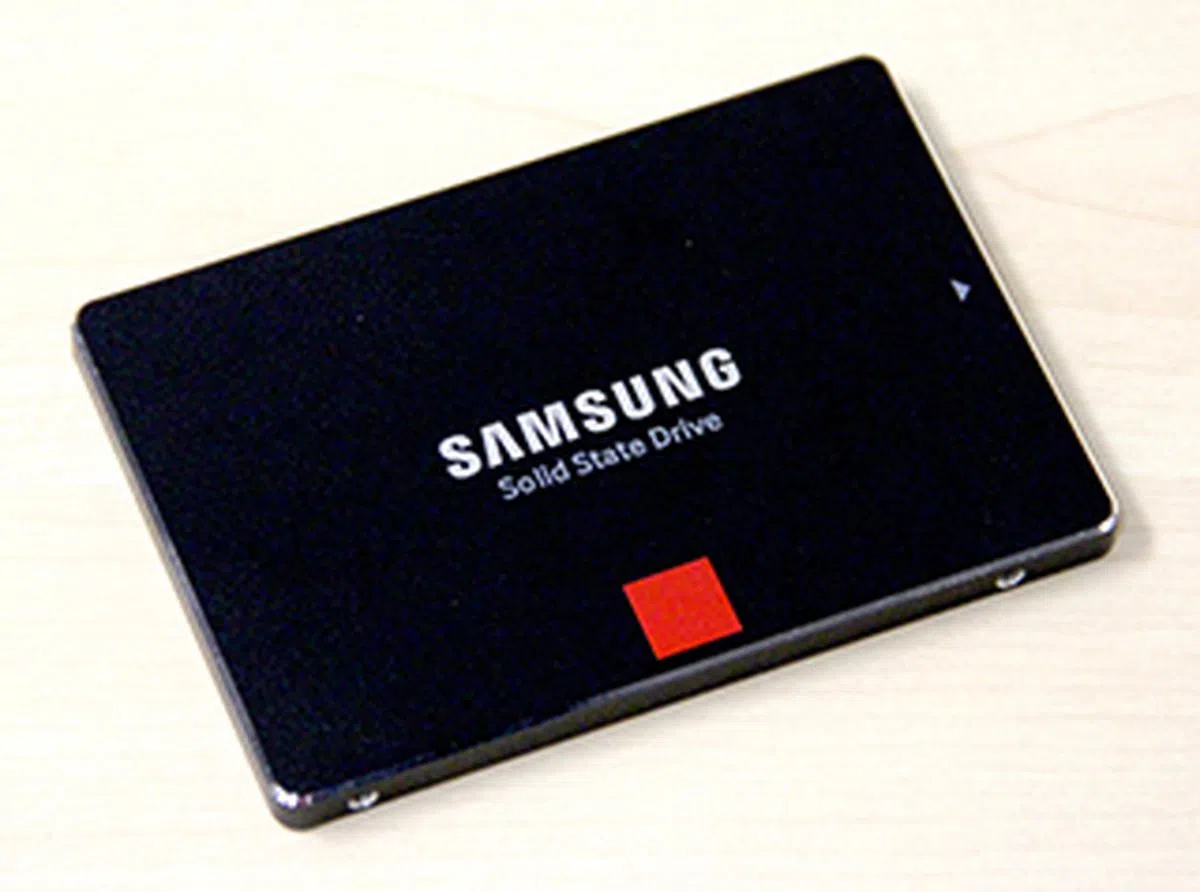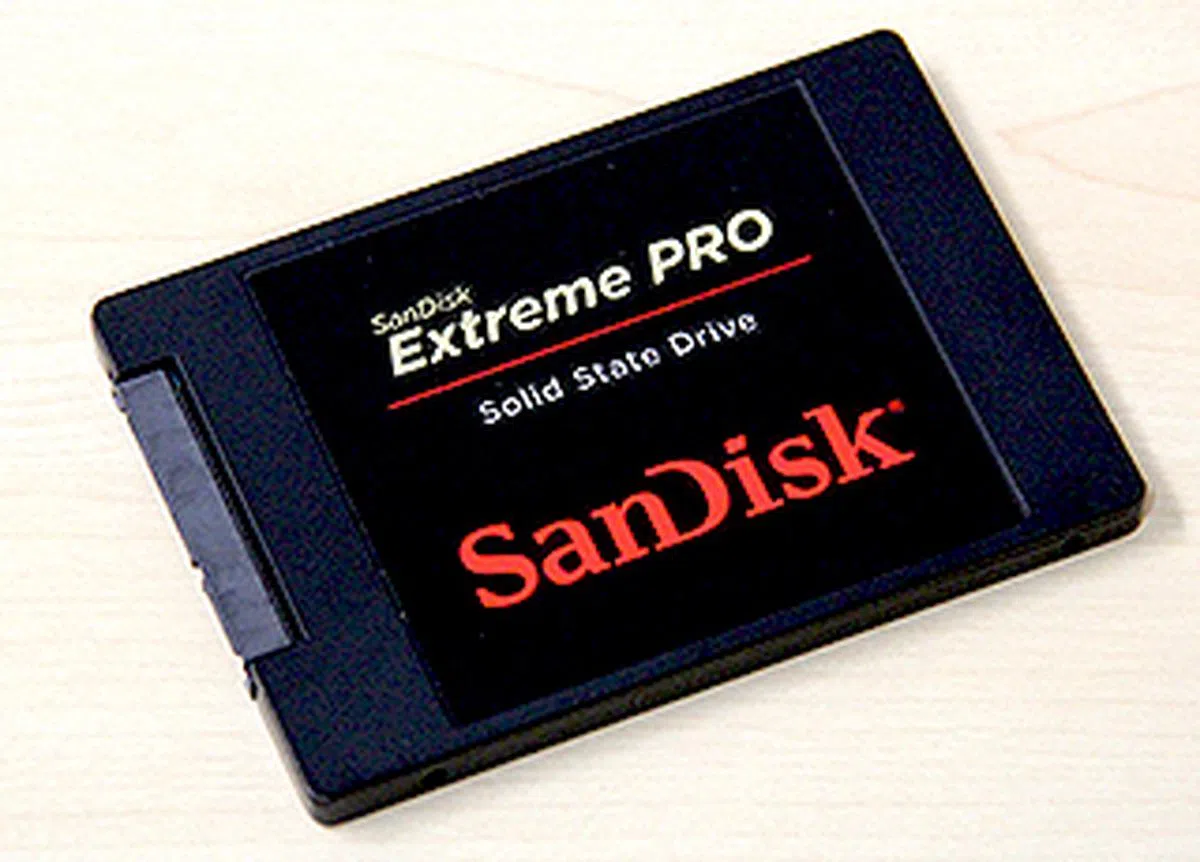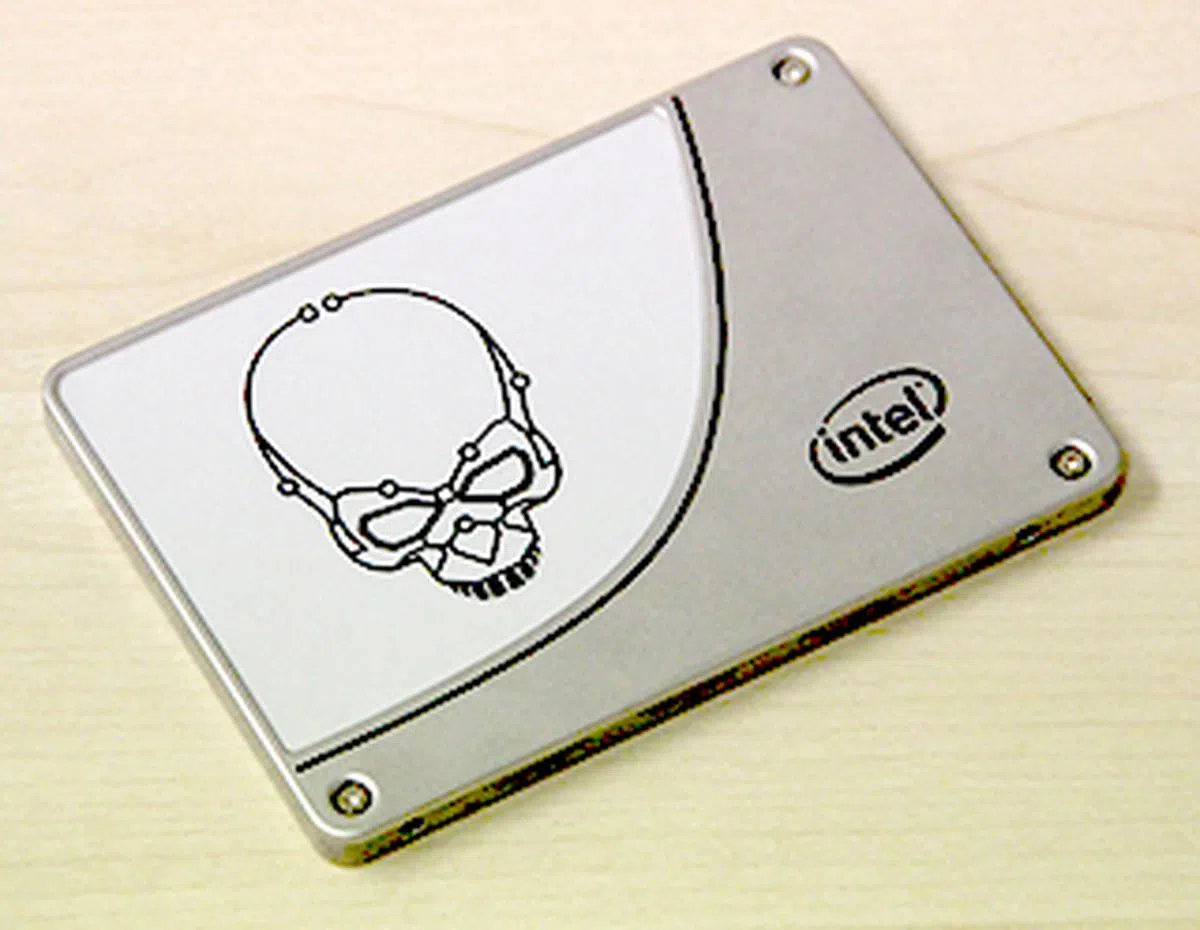Battle of the SSD juggernauts - Intel vs. SanDisk vs. Samsung
Intel, SanDisk and Samsung are three of the biggest names in the flash business. All three have their own NAND production facilities and two of them even produce their own SSD controller. We pit the respective flagship drives from each brand to see who will emerge victorious.
By Kenny Yeo -
Heavyweights at War
We have mentioned many times in previous SSD reviews that the market for SSDs is extremely competitive and price-sensitive. And the only way to remain competitive is to own your NAND production facilities or intellectual property in the form of the SSD controller or firmware. True enough, the best SSDs in the market today come from companies who fulfill the above mentioned criteria.

With their own NAND foundries to call upon, Intel, Samsung and SanDisks are true juggernauts in the business of SSDs.
The most dominant company in the SSD business today is Samsung. They are number one in terms of NAND production and sales. Their drives are also very popular amongst users and OEMs. It should come as no surprise then that Samsung is one of a handful of companies that has successfully integrated all aspects of SSD manufacturing - NAND, controller and firmware.
Another company to do so is Intel. Intel has traditionally been very strong in SSDs and their early SandForce driven offerings in the form of the SSD 520 Series was very well-received. And although they have been quiet on the consumer scene for the past year or so, they still have a tremendous presence in the enterprise market.
SanDisk is another giant in the flash scene and because of their partnership with Toshiba, is one of the few SSD brands to have their own NAND production facility and therefore access to top quality NAND chips. And even though they do not have a in-house controller of their own, they make up for that by developing their own firmware for the third-party controller solutions that they use.
And so today we are rounding up the flagship drives from these three companies to see which is best. It’s a three-way showdown featuring some of the biggest names in the consumer SSD scene - Samsung’s SSD 850 Pro, Intel’s SSD 730 Series and SanDisk’s Extreme Pro SSD.
Intel SSD 730 Series
Intel has been focusing on the more lucrative enterprise market in the past year or so, but launched its new Intel SSD 730 Series early last year. The SSD 730 Series is the company’s newest flagship consumer drive and it is an interesting drive for a few reasons.

The Intel SSD 730 Series looks industrial and has a logo of a skull emblazoned on the case, reminding us of Intel's older Skulltrail platform.
To begin, this is the first SSD since the older SSD 320 Series from 2011 to be fully developed in-house by Intel. This means that SSD 730 Series does not employ a SandForce controller, like the older SSD 520 and SSD 530 Series, nor is it driven by a Marvell controller. Inside the SSD 730 Series is in fact Intel’s own “Third-Generation controller.” This is the same controller used in Intel’s S3500 and S3700 enterprise-class SSD. It has an eight-channel design, but is running at 50% higher clock speeds in the SSD 730 Series than in the S3500 and S3700 - 600MHz as compared to 400MHz.
NAND comes in the form of Intel’s own 20nm MLC NAND part, but it is of the 128Gbit variety. This is an odd choice as we usually see 128Gbit NAND employed in drives targeted at entry-level and mainstream users and not high-end models. The reason for this is that higher density memory invariably leads to inferior write performance because the lesser dies and packages are required to make up the capacity, as a result the controller, which can write to multiple packages simultaneously, becomes under utilized. We covered this in our review of the Crucial M550 when we talked about NAND parallelism and how it affects performance..
And if one peels open the SSD 730 Series, they will find an extra die of NAND flash. This extra die appears on both 240GB and 480GB models and is used for over provisioning and reserved exclusively for the controller to use. The reason for this is to provide better endurance as Intel has claimed that even the 240GB model is good for up to 50GB of writes a day and has a rated lifespan of 91TB of writes - most consumer SSDs of this capacity top out at 80TB. And as we have mentioned before, 50GB of writes a day is actually very high for mainstream users - even the most heavy mainstream users should only see around 20GB of writes per day typically.
Since the SSD 730 Series is based heavily on Intel’s enterprise SSDs, the SSD 730 Series also gets useful features such as power-loss protection. On the other hand, the controller does not offer any form of low-state power support. So if one were to examine the specifications closely, you will find that the SSD 730 Series’ idle power consumption is a very high 1.5W. For comparison, most consumer SSD’ idle power consumption are in the range of 50mW to 100mW. This means the drive is not as ideal for notebooks.

The Intel SSD Toolbox lets users quickly check on their drives to see its status and lifespan and also provides a quick and easy way to upgrade the drive's firmware.
The SSD 730 Series is compatible with Intel’s Data Migration Software as well as SSD Toolbox, a utility that helps to optimize and monitor the drive and also update its firmware. It also supports 256-bit AES encryption, but not TGC Opal 2.0 nor IEEE1667. The drive comes as is with no other accessories. It supports the SATA 6Gbps interface.
The SanDisk Extreme Pro
The SanDisk Extreme Pro is the successor to the very competent SanDisk Extreme II SSD. The Extreme II SSD marked SanDisk’s switch to a Marvell controller and it was a move that yielded very impressive results as we found the Extreme II to be a really quick drive.

The Extreme Pro is SanDisk's newest flagship consumer SSD and is one of only two consumer SSDs to offer a 10-year long warranty.
The Extreme Pro builds on the successes of its predecessor by using the same tried-and-tested Marvell 88SS9187 controller, but with updated NAND memory and firmware. NAND memory comes in the form of the SanDisk’s second-generation 19nm 64Gbit MLC NAND, which is essentially the same as Toshiba’s since both companies have a unique partnership with regard to NAND production. Interestingly, despite having the same rated endurance as its predecessor (80TB or roughly 20GB a day), SanDisk is offering the new Extreme Pro with 10-year long warranties. This is no doubt a marketing move, but one that is much welcomed since it improves vastly on the previous standard of 5-year warranties for flagship consumer drives.
This also means it has the same advantages and disadvantages of the older Extreme II SSD. To begin, the Extreme Pro SSD features an improved version of SanDisk’s nCache SLC caching technology called nCache Pro. This works by dedicating a portion of the NAND die to operate in SLC mode to improve random write performance. As for disadvantages, this means that like its predecessor, the Extreme Pro SSD does not support any form of encryption for security.

The SanDisk SSD Dashboard lets users monitor the health of their drives and also update its firmware.
The Extreme Pro SSD is fully compatible with SanDisk’s SSD Dashboard utility, which lets users monitor and optimize the drive, and also allows for quick and easy updating of the drive’s firmware. The drive only comes with a 2mm bumper for installation. It supports the SATA 6Gbps interface.
Samsung SSD 850 Pro
Samsung’s SSD 850 Pro should be no stranger to frequent readers here. It is arguably the most important drive of last year thanks to its use of innovative 3D V-NAND.

The Samsung SSD 850 Pro features ground-breaking 3D V-NAND and is the fastest drive we have ever tested. How will it fare against Intel's and SanDisk's flagships?
We wrote about it extensively in our initial review of the drive so we urge readers who are unfamiliar with this new technology to head back and get acquainted before proceeding with this 3-way shootout. But the short story is this:- 3D V-NAND stacks memory cells on top of each other in order to overcome the problem of squeezing cells closer and closer together. It’s an elegant and advantageous solution. Not only does this mean more cells can now be squeezed into a fixed area, stacking cells also improves performance, endurance and power efficiency.
Thanks to its high-tech 32-layer 3D V-NAND memory, the 256GB variant of the Samsung SSD 850 Pro has a rated lifespan of 150TB, more than double that of the SanDisk Extreme Pro and over 60% more than the Intel SSD 730. The Samsung SSD 850 Pro is powered by the in-house developed 3-core MEX controller and supports 256-bit AES, TCG Opal 2.0 and IEEE1667 encryption. It uses the SATA 6Gbps interface.

The Samsung Magician utility is a nifty tool for monitoring the drive and updating its firmware.
The SSD 850 Pro also supports Samsung’s excellent Magician SSD utility, which lets users optimize the drive, monitor its status and also update firmware. The Magician utility also lets users enable RAPID Mode on the drive, a caching technology that makes use of spare system memory and CPU cycles to dramatically boost performance. We have tested it out before and found it to work very well. Samsung also provides a handy data migration software to enable users to quickly clone and setup their SSDs.
Test Setup
The three drives will be tested on our dedicated storage testbed:
- Intel Core i5-2500K (3.3GHz)
- ASUS P8Z77 Pro Thunderbolt (Intel Z77 chipset)
- 2 x 2GB DDR3-1600 memory
- MSI GeForce 8600 GTS
- Windows 7
Our revised benchmark ditches older benchmarks such as HD Tune and also includes an all new timing test to better evaluate the drive’s real world performance. The list of benchmarks used are as follows:
- AS-SSD benchmark 1.7.4739
- CrystalDiskMark 3.0.1
- PCMark 7 (Storage suite)
- Iometer (version 2006.07.27)
- Timing Tests (Cold start, Reboot, Apps Launching)
It will be interesting to see how the Samsung SSD 850 Pro fares against the flagship consumer drives from Intel and SanDisk. We have also included results of other popular drives such as the Crucial M550 and the recently reviewed Samsung SSD 850 Evo.
Here is the list of drives tested:
- Intel SSD 730 Series
- SanDisk Extreme Pro
- Samsung SSD 850 Pro
- Plextor M6 Pro
- Crucial M550
- Samsung SSD 850 Evo
- Samsung SSD 840 Evo
- Crucial MX100
Timing tests
The timing tests evaluate how the SSDs perform in real-world everyday situations, namely booting up from a cold start, reboot and launching applications. As for the applications used, we made the drives launch 11 applications from the Adobe CS6 suite of utilities simultaneously; they include resource-intensive applications such as Photoshop, InDesign, Dreamweaver, and Premiere Pro, amongst others. As a point of reference, a 7200rpm mechanical hard disk would take over 5 minutes to open all the applications.
The times recorded by the SanDisk Extreme Pro was very respectable and it was one of the faster drives. And even though it was slower than the Samsung SSD 850 Pro and Plextor M6 Pro, the difference between the two was not a cause for much concern. The Intel SSD 730 Series, on the other hand, was a little underwhelming. The time it took to boot from a cold start and to reboot was a little on the high side, and more similar to mainstream drives such as the Crucial M550 and Samsung SSD 850 Evo.

PCMark 7 results
PCMark 7 is a benchmarking suite from FutureMark that evaluates the performance of Windows 7 machines. It tests a wide range workloads and aspects of the system ranging from computation, image and video manipulation and storage. We’ll be looking solely at the storage test here.
The Samsung SSD 850 Pro and SSD 850 Evo racked up the highest scores on PCMark 8 and only the Plextor M6 Pro came close to challenging them. The Intel SSD730 Series and SanDisk Extreme Pro both recorded very similar scores with only a few points separating them. However, it must be noted that the difference between the top and bottom drive was just 334 points or just over 6% difference. So if we were to look at the big picture, all eight drives performed respectably, but there are clearly some drives that were just that little bit faster.


CrystalDiskMark 3.0.1 Results
CrystalDiskMark is an easy-to-run and quick utility to use to gauge a drive’s performance. It measures sequential read and write performance and random read and write speeds of random 4KB, 4KB (queue depth 32) and 512KB data.
Intel’s decision to employ 128Gbit NAND is perplexing as it will inevitably affect write performance and so it was no surprise to see that write performance of the Intel SSD 730 Series was poor compared to the SanDisk and Samsung drives. The other drive here to employ 128Gbit NAND is the Crucial MX100, but even then, the Crucial MX100’s write performance was not as bad as the Intel SSD 730 Series’.
On the other hand, the SanDisk Extreme Pro proved to be a a much more capable performer, but there were some quirks. 512K read performance was poor and so was 4K reads and writes. The Samsung SSD 850 Pro continued to impress and posted some of the highest speeds and was also very consistent in its performance as well.




AS SSD 1.7.4739 results
AS SSD is a benchmark that uses non-compressible and completely random data. This removes the advantage of controllers who compress data first before manipulating them, such as the old SandForce SF-2281 controller. Therefore, this is a useful benchmark in creating a level playing field for all controller types.
The Intel SSD 730 Series continued to disappoint on AS SSD. Its recorded speeds for the Copy benchmark was the lowest of the drives. The SanDisk Extreme Pro fared much better and was one of the top performing drives. However, it still found itself trailing against the Samsung SSD 850 Pro. The fastest drive in the Copy Benchmark was the recently reviewed Samsung SSD 850 Evo.
Moving on, we can see that Intel’s decision to use 128Gbit NAND has severely hampered write performance. Sequential write speeds were only just above 280MB/s, whereas drives like the SanDisk Extreme Pro and Samsung SSD 850 Pro were managing close to 500MB/s. Fortunately, read speeds were still decent, but only just. The SanDisk Extreme Pro was a much better performer, but again, it was outperformed by the Samsung SSD 850 Pro.




Iometer results (Part 1)
Lastly, we put the drives through the rigorous grind of Iometer, with different workloads and I/O queue depths. We have chosen to show results from a queue depth of 1 to 5 as this better represents the workloads a typical consumer might face.
On Iometer, most of the drives performed quite similarly on the 64k streaming reads workload, with the exception of the Samsung SSD 850 Evo. On the 64k streaming writes workload, the top performing drives were the Samsung SSD 850 Pro and SanDisk Extreme Pro. As expected, the Intel SSD 730 Series did terribly, and this can be attributed to the use of 128Gbit NAND. Moving on to the File Server workload, the Samsung SSD 850 Pro was the top performing drive again, while the SanDisk and Intel drives were toward the middle of the pack. Finally, on the Web Server workload, the Intel SSD 730 Series shone and outperformed the Samsung SSD 850 Pro by a noticeable margin, perhaps hinting of its workstation class pedigree. The SanDisk Extreme Pro’s performance on the last work scenario was slightly below average.




Iometer Results (Part 2)
Finally, we look at the I/O response times for the workloads reported on the previous page. As the graphs show, most drives are generally very responsive when it comes to reads, but writes are a little trickier. The fastest writing drives typically have in-house controllers and firmware. The type of NAND memory used plays an important role too, TLC-NAND and higher density 128Gbit NAND tend to be less responsive to write requests. Amongst our three contenders, the Samsung SSD 850 Pro was the most consistent and amongst the quickest drives.




Samsung Dominating
When we reviewed the Samsung SSD 850 Pro back in July last year, we called it a “game changer” because it is one of the most important and eagerly anticipated drives in quite some time. Despite the number of players in this market, truly great and important innovations in the SSD and NAND memory space are few and we are reaching a point where existing technologies in manufacturing are facing diminishing returns. Samsung’s new 3D V-NAND claims to be able to solve this problem and also improve performance and endurance, and judging from the results of the SSD 850 Pro and also the SSD 850 Evo, we have no reason to disbelieve that.
The Intel SSD 730 Series marks the company’s return to the high-end consumer SSD scene, but it falls flat. Performance was especially underwhelming for a drive that purports to cater to enthusiasts, and much of the blame can be directed at Intel’s puzzling decision to outfit the drive with 128Gbit NAND. which resulted in abysmal write performance since the controller’s potential cannot be realized. And while the Intel SSD 730 Series does promise higher endurance, it is also outdone by the Samsung SSD 850 Pro in this aspect. On the flip side, we did see some glimpses of what the drive was capable of on the enterprise-oriented "File Server" and "Web Server" workloads in Iometer. If only Intel had populated the drive with 64Gbit NAND.
The SanDisk Extreme Pro performed significantly better than the Intel SSD 730 and is one of the faster drives in the market right now, but it does suffer from some inconsistencies in certain workloads and scenarios. Thankfully, that is not enough to detract the fact that it is a very capable performer. SanDisk’s decision to back the Extreme Pro with 10-year long warranties should also be applauded, even if it comes across as a bit of a marketing ploy since endurance of SanDisk’s new NAND has not improved significantly.

If you are looking for a high-end, enthusiast-grade consumer SSD, the Samsung SSD 850 Pro is a very tough act to beat.
Taking on the Samsung SSD 850 Pro was always going to be a challenge, not least because of its stunning performance and consistency. And then there is its 10-year warranty and rated endurance of 150TB, which is the highest by far of any consumer SSD - the Intel SSD 730 Series comes in at 91TB, whereas the SanDisk Extreme Pro’s figure is 80TB. All things considered, the performance crown is still safely within Samsung’s hand.
Prices of SSDs have been on a downward trend and when the Samsung SSD 850 Pro was launched, we were looking at a recommended retail price of S$329. Now, street prices have come down to much more palatable levels and the drive can be had for around S$280, depending on where you shop. It is the same story for the Intel SSD 730 Series and SanDisk Extreme Pro. Recommended retail prices for both drives were S$360 and S$349 respectively. But now, both drives can be had for around S$270.
Drive | Price |
Intel SSD730 Series (240GB) | S$270 |
SanDisk Extreme Pro (240GB) | S$270 |
Samsung SSD850 Pro (256GB) | S$280 |
The market for SSD is very tightly contested and considering what the drives offer, it is hard not to recommend the faster and higher endurance Samsung SSD 850 Pro over the Intel SSD 730 Series and SanDisk Extreme Pro. The Intel and SanDisk drives find themselves up against a very formidable opponent in this segment of the market. Samsung has been a dominating force in the consumer SSD scene for the past two or so years and they show no signs of letting up. The older SSD 840 Pro was a top drive and the SSD 850 Pro has surpassed it in every way.
If these prices are too much for you to stomach, there are other more affordable and worthy alternatives. The Plextor M6 Pro offers very competitive performance and is priced in a segment that has little competition other than the Samsung SSD 850 Evo. For bargain hunters, the old Samsung SSD 840 Evo, Crucial M550 and MX100 are the best sub-$200 SSDs around for a 250GB capacity drive.
 | |
 | |
 |
Our articles may contain affiliate links. If you buy through these links, we may earn a small commission.


